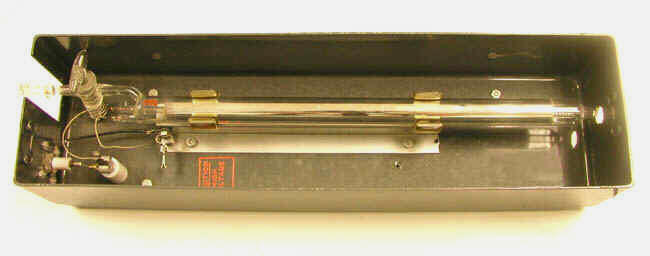Bernstein-Ballentine Counters (early 1950s)
These tubes, known as Bernstein-Ballentine counters, were manufactured by the Nuclear Instrument and Chemical Corporation sometime in the early 1950s. They are 7/8" in diameter and 19 to 24" long.

Their purpose was to measure the carbon-14 content of carbon dioxide, often as a means to date organic material (C-14 dating). The samples to be analyzed would be combusted and the resulting carbon dioxide drawn into the tubes for counting. I believe that methane was used as the counting gas (with which the carbon dioxide was mixed). The steel mounting box in the following photograph was convenient for holding and protecting the fragile glass tubes. It also provided some degree of shielding and it covered up the electrical connections.

Quoting the AEC's Radiation Measuring Instruments and Associated Components: "This method involves the rapid combustion of radioactive organic samples by the Van Slyke-Folch technique and assay of the resultant carbon-14 dioxide with the Bernstein-Ballentine proportional counter. Organic samples of from 0.1 to 15 mg. of carbon content can be combusted and the gas measured manometrically and transferred to the proportional tube in 15 minutes or less."
Reference
Atomic Energy Commission Radiation Measuring Instruments and Associated Components RIB-8 (Part 2) Supplement, July 1, 1954, page BG-6E.
